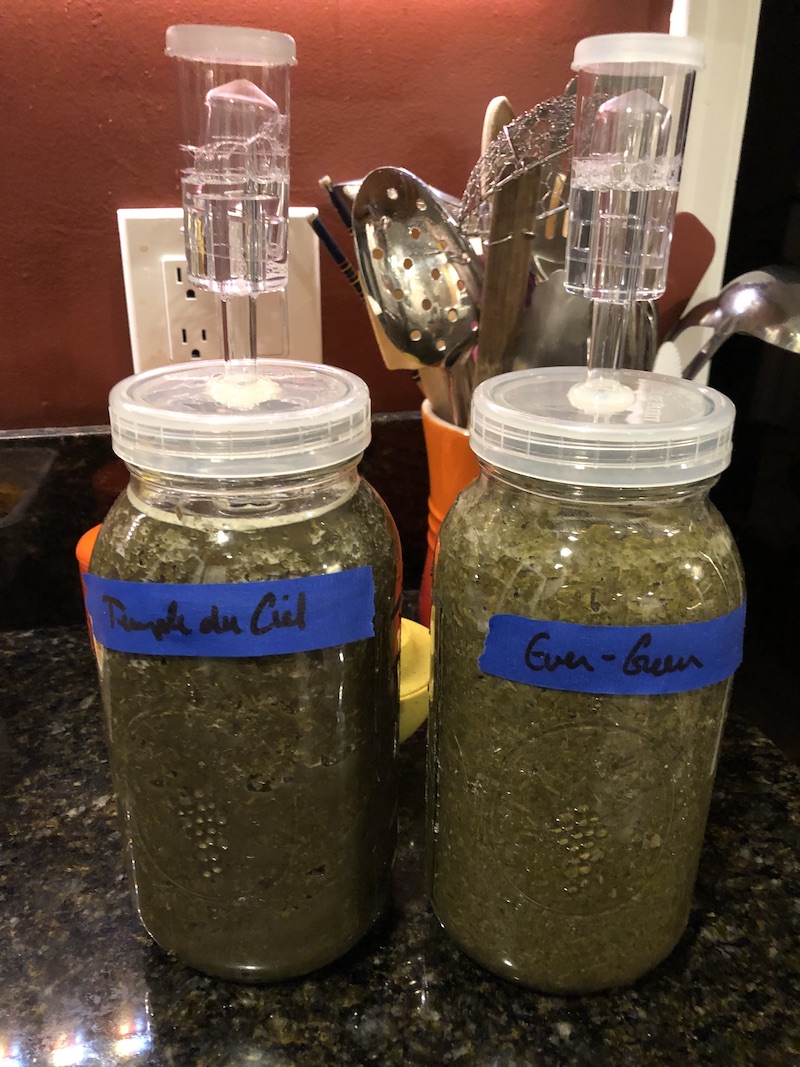laphet

Laphet is Burmese fermented tea leaves. It’s difficult to locate recipes for it, mostly because the search results are a glut of laphet thoke (Burmese tea leaf salad) results.
Typically this is made with fresh tea leaves, but Sandor’s latest book has a recipe that uses loose leaf dried green tea. I’m going to start with that, but not add the extra items (garlic, chili). I’m going for pure fermented green tea leaves that can be enhanced however at some later time.
The recipes I’ve seen for this don’t specify what kind of tea to use, so I’m trying two (both acquired at Fubonn):
Batch 1:
| 300 g | Temple of Heaven Special Gunpowder China Green Tea |
| 30 g | salt |
| 30 g | kraut backslop |
Batch 2:
| 300 g | Ever-Green China Green Tea |
| 30 g | salt |
| 30 g | kraut backslop |
If you’ve ever made loose-leaf teas before, you know that 300g is a LOT of tea. I estimate that (if these work out) I’ll end up with about a gallon of laphet. Oops?
Method applied to each batch:
- Cover dried tea with about 2-3 litres of water just shy of the boiling point, then let soak for 10 minutes
- Drain the tea then rinse with cold water
- Cover wet tea with about 2-3 litres of cold water then let sit for an hour or so
- the goal of these steps is to remove bitterness from the tea
- Using a food processor or a blender, process the tea in batches until it’s the consistency of a rough pesto. I needed three batches for each tea and split the salt and backslop across the batches. I also added chlorine-free springwater as needed to allow the mixture to move in my food processor. You don’t want things to be too dry when you put them up.
- Pack into sanitised jars/containers and set aside to do their fermenting thing.
Note: Each batch makes about 2 litres, which is a LOT of laphet. I don’t recommend you do this large of batches. Scale things down, k?
And if it doesn’t work out? It’ll be great in your compost bin.
2022-07-23
Checked them today. Neither taste especially acidic at all. I neglected to get a pH reading, alas. Both of them smell lightly floral, with the Ever-Green edging out the Temple of Heaven for that. The Temple of Heaven had a thin layer of mold on the top, mostly on the glass weight. I cleaned that off and sanitised it, then carefully scraped off the top layer of tea.
Both batches were a bit dry in the top half. I added spring water and another spoonful of backslop to each to see whether that can get them moving a bit more.
Regardless, I think I’m in for the long haul on these. Research shows it’s not rare for laphet to ferment for a year or more, and now I can see why.